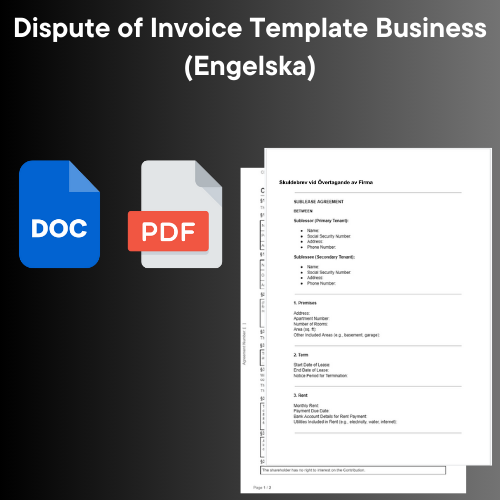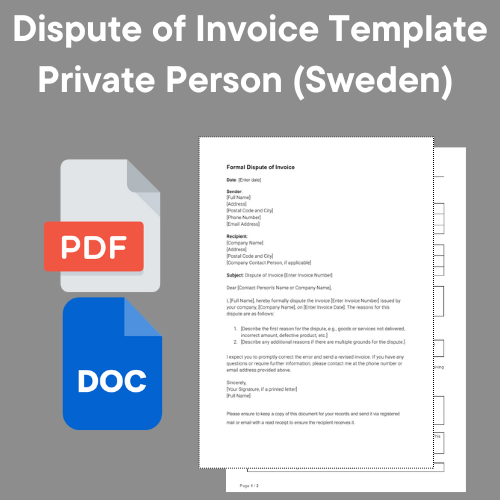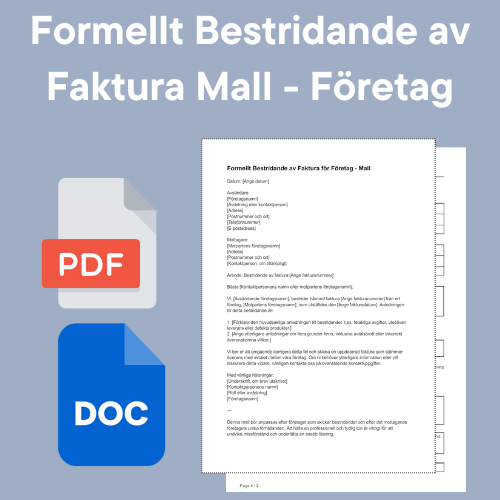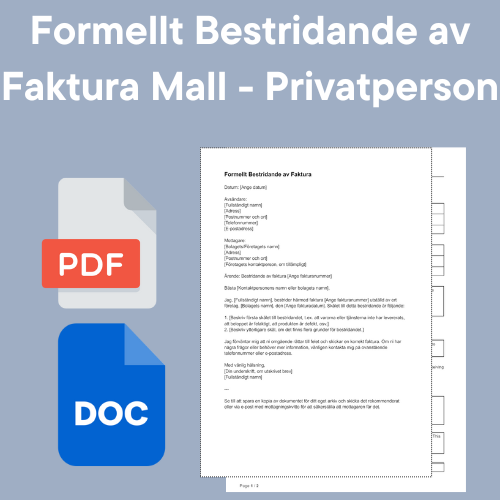When should you dispute an invoice?
Share
Guide to Disputing an Invoice
Table of Contents
- Legal Basis for Disputing an Invoice
- Dispute Part of an Invoice
- Scam invoice
- Relevant Legislation
- Practical Steps to Dispute an Invoice
- What Happens After the Fight?
- Legal cases and practice
- Authorities and Help
Legal Basis for Disputing an Invoice
In order to dispute an invoice, you need a legal basis. This means that there are errors or deficiencies in the invoice or in the product or service to which the invoice refers. According to the Purchase Act, this can include that the product is faulty, that the service was not performed according to the agreement, or that the invoice does not correspond to what was agreed between the parties.
Dispute Part of an Invoice
If part of the invoice is correct, but another part is incorrect, you can dispute only the incorrect part. It is important that you pay the undisputed part to avoid further problems such as reminder fees or late payment interest.
Scam invoice
A bogus invoice is an invoice that is sent without any agreement or order being the basis. These invoices may contain threats of collection or the Bailiff to force the recipient to pay. If you receive a fraudulent invoice, you should immediately dispute it and inform the company that you do not intend to pay because no order has been placed. You should also consider reporting the incident to the police as a fraud.
Relevant Legislation
- The Purchase Act (1990:931) - Regulates purchases between private individuals and between companies. The law deals with defects in the goods and the buyer's right to withhold payment or demand a price reduction.
- The Consumer Purchase Act (1990:932) - Applies when a private person buys goods from a trader. This law is binding in favor of the consumer.
- Debt Collection Act (1974:182) - Regulates debt collection activities and protects debtors from unjustified demands and pressure.
Practical Steps to Dispute an Invoice
- Contact the Company: Before taking formal action, contact the company in writing and point out the error. Many times mistakes can be resolved quickly and easily.
- Written Communication: Dispute the invoice in writing via letter or e-mail and save all correspondence. This can be decisive if the case proceeds to debt collection or court.
- Pay under protest: If you want to avoid reminder fees, you can pay the invoice under protest. This means that you pay but at the same time announce that you consider the invoice incorrect and reserve the right to demand the money back.
What Happens After the Fight?
If the company does not accept your dispute, they can forward the case to debt collection. It is important that you also dispute the debt collection claim and notify the debt collection company of your position. If the debt collection company still sends the case to the enforcement officer, you must dispute the payment order within 10 days to avoid payment complaints.
Legal cases and practice
There are several court cases dealing with the dispute of invoices. A relevant example is NJA 2007 p. 909 where the Supreme Court determined that a consumer had the right to withhold payment due to defects in the delivered goods. This shows the importance of having a clear legal basis when disputing invoices.
Authorities and Help
- The Swedish Consumer Agency: Provides advice and support to consumers who want to dispute invoices. They also have guides and templates for how to go about it.
- Bailiff: Handles payment orders but cannot settle disputes. It is important to dispute in time to avoid payment notices.
- Datainspektionen: Supervisory authority for debt collection activities and can be contacted if debt collection companies do not follow the rules.
By following these guidelines and using the legal basis, you can effectively dispute an invoice and protect your financial interests. For further information and specific advice, contact a legal adviser or a consumer organisation.




